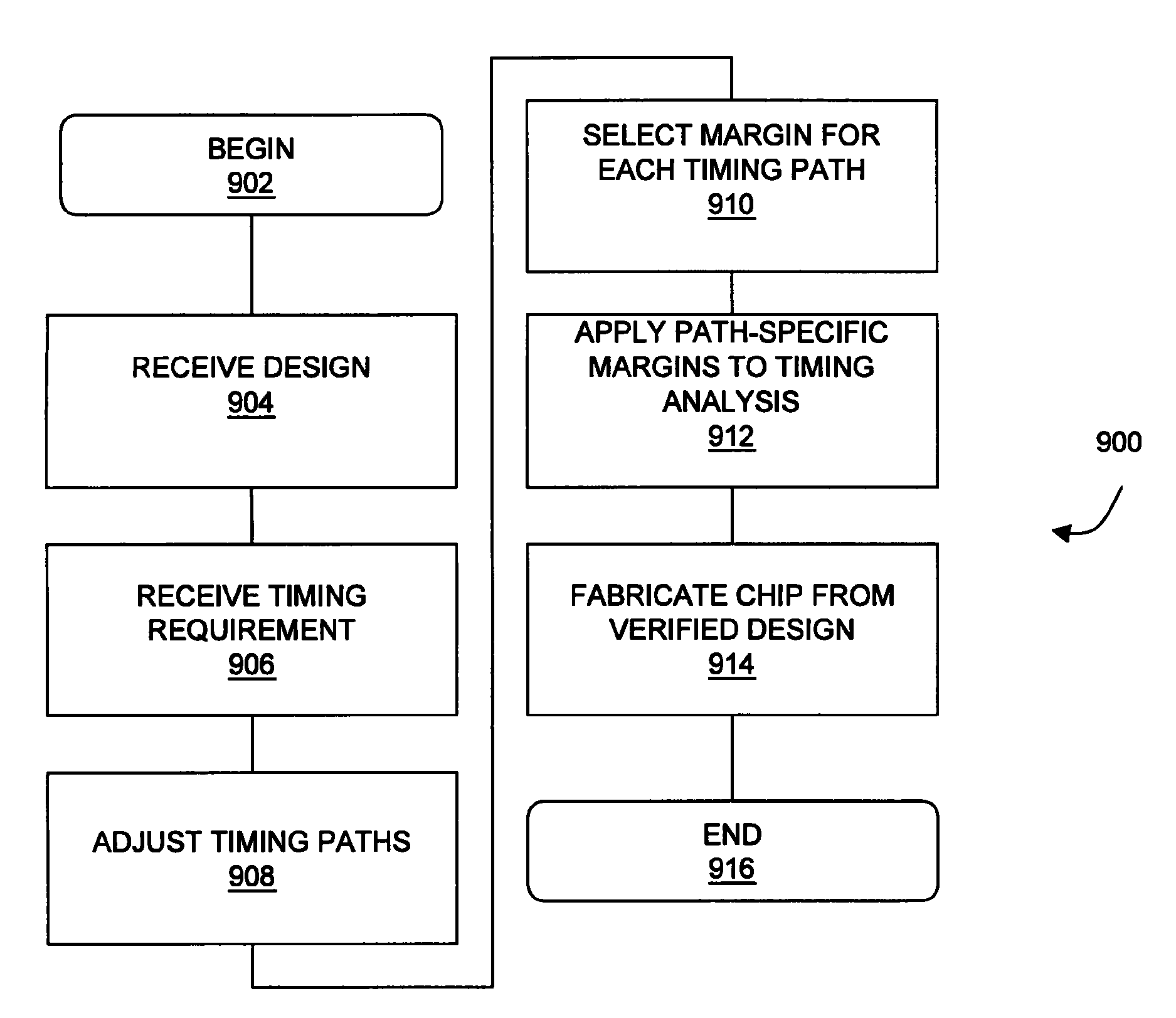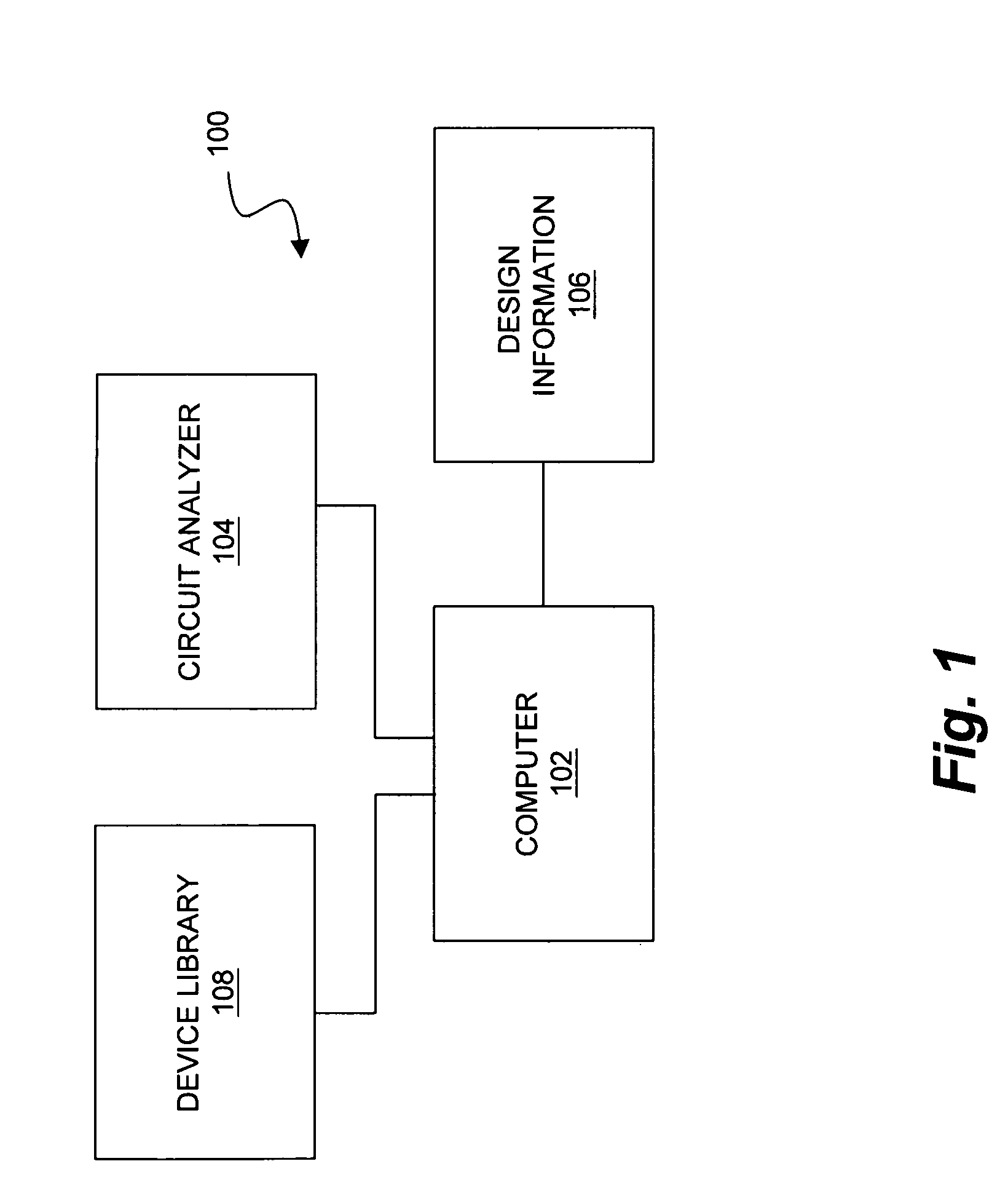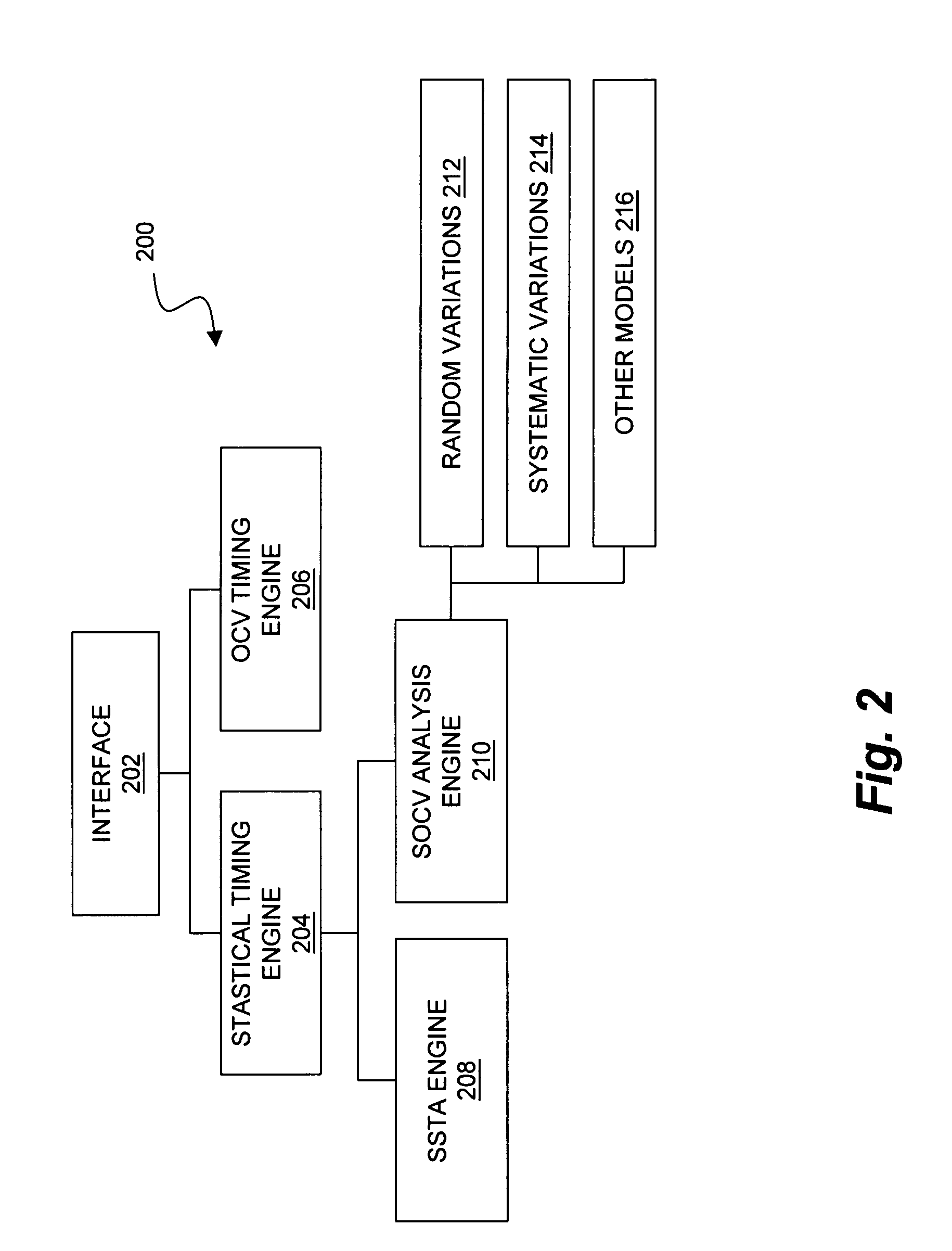Timing analysis using statistical on-chip variation
a technology of time-varying and statistical analysis, applied in the field of electronic design automation, can solve the problems of computational cost, empirically-based margins of a design may fail to correctly capture and benefit, and the approach is computationally expensiv
- Summary
- Abstract
- Description
- Claims
- Application Information
AI Technical Summary
Benefits of technology
Problems solved by technology
Method used
Image
Examples
Embodiment Construction
[0035]The following disclosure relates generally to systems and methods for deriving design-specific margins for use in on-chip variation (“OCV”) analysis of a chip design.
[0036]As used herein, the terms “comprises,”“comprising,”“includes,”“including,”“has,”“having” or any other variation thereof, are intended to cover a non-exclusive inclusion. For example, a process, method, article, or apparatus that comprises a list of elements is not necessarily limited to only those elements but may include other elements not expressly listed or inherent to such process, method, article, or apparatus. Further, unless expressly stated to the contrary, “or” is intended to mean “and / or” unless otherwise stated to the contrary. Also, use of the “a” or “an” are employed to describe elements and components of the invention. Thus in the foregoing description references to the singular (“a”, “an”, “the”, “one”, etc.) are also intended to refer to the plural unless otherwise stated or clear from the co...
PUM
 Login to View More
Login to View More Abstract
Description
Claims
Application Information
 Login to View More
Login to View More - R&D
- Intellectual Property
- Life Sciences
- Materials
- Tech Scout
- Unparalleled Data Quality
- Higher Quality Content
- 60% Fewer Hallucinations
Browse by: Latest US Patents, China's latest patents, Technical Efficacy Thesaurus, Application Domain, Technology Topic, Popular Technical Reports.
© 2025 PatSnap. All rights reserved.Legal|Privacy policy|Modern Slavery Act Transparency Statement|Sitemap|About US| Contact US: help@patsnap.com



